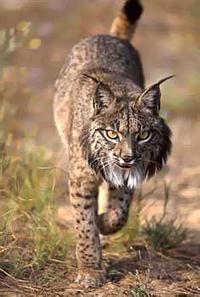Dozens of European mammal species face extinction

Dozens of European mammals, including the Iberian lynx, the elusive Saiga antelope and the Mediterranean monk seal, face extinction unless immediate measures are taken to protect them, a conservation group said Tuesday.
A total of 35 of the continent's 231 mammal species - about 15 percent - fall into the threatened category, according to a report on the state of Europe's mammals published by the World Conservation Union.
The 60-page report commissioned by the European Union warns that 27 percent of mammal species show a fall in numbers, compared with 8 percent that are increasing.
Two European land mammals - a rabbit-like creature called the Sardinian pika and the aurochs, an ancestor to domestic cattle species - have already disappeared completely, while the gray whale has become extinct in European waters though it can still be found in the Pacific.
According to the group, known by its acronym IUCN, the saiga antelope, the Mediterranean monk seal, the North Atlantic right whale, the Bavarian pine vole and world's most endangered cat species - the Iberian lynx - could soon follow.
There are only two small populations of Iberian lynx in Spain today, totaling about 150, and the number of Mediterranean monk seals has shrunk to between 350 and 450 in total, the group said.
A further nine mammal species are considered endangered, including the blue whale, the largest mammal on the planet. Another 21 species are listed as vulnerable.
"This new assessment proves that many European mammals are declining at an alarming rate," IUCN Director-General Julia Marton-Lefevre said. "We still have the power to reverse that trend, as the case of the European bison which was brought back from extinction clearly shows."
The bison, once plentiful in central and southeastern Europe and the Caucasus, was nearly wiped out in the wild by the end of the 19th century. Extensive protection and re-population efforts have allowed their numbers to grow again, meaning Europe's largest native herbivore is now considered vulnerable, but not acutely threatened.
Human impact on the environment such as deforestation, wetland drainage, pollution and over-harvesting is the main reason why the mammals are threatened, IUCN said.
The report recommends that existing conservation policies are implemented, including the European Union's stated aim of halting species loss by 2010.
The group publishes an annual "Red List" of endangered species, which it classifies into nine categories from "least concern" to "extinct."
Subscribe to Pravda.Ru Telegram channel, Facebook, RSS!





